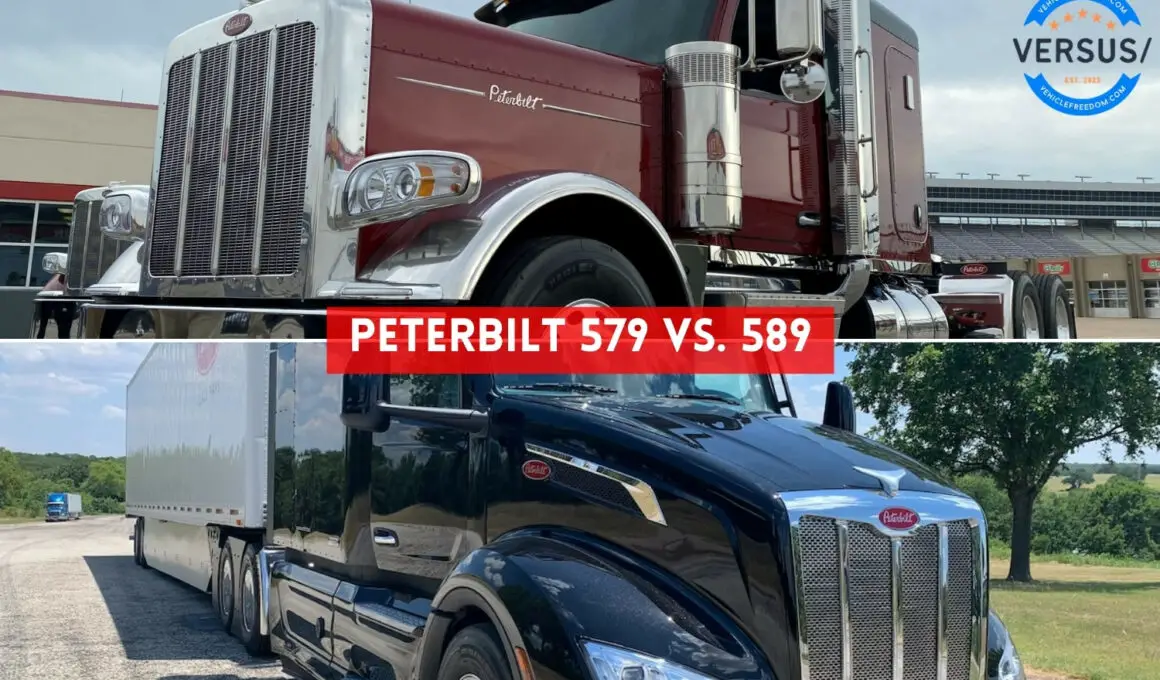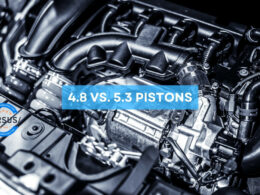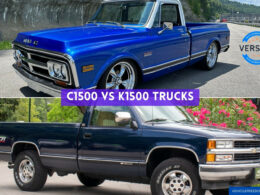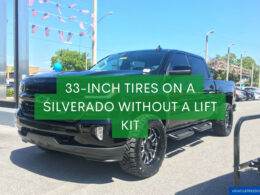In This Article Show
The world of trucking is as vast as the highways these giants roam. And speaking of giants, there’s no brand quite as iconic in the American trucking landscape as Peterbilt.
With a reputation for producing vehicles that are as robust as they are elegant, Peterbilt has established itself as a cornerstone in the industry. After publishing our well-received Peterbilt 379 vs. 389, we thought Today, we dive deep into a comparative analysis of two of its remarkable models: the Peterbilt 579 and the 589.
Understanding the nuances between these two models can be invaluable for those considering a purchase, managing a fleet, or simply harboring a passion for big rigs. Each truck boasts features, advantages, and design philosophies tailored to meet specific needs and preferences.
So, buckle up, and let’s embark on this journey of discovery, shedding light on the distinct characteristics of the 579 and 589, and revealing which might be the ideal choice for your unique requirements.
Peterbilt 579 vs. 589: Aesthetic and Design Differences
Regarding the open road, style often speaks as loudly as horsepower. While both the 579 and the 589 are undeniably Peterbilts at heart, distinct design elements set them apart.
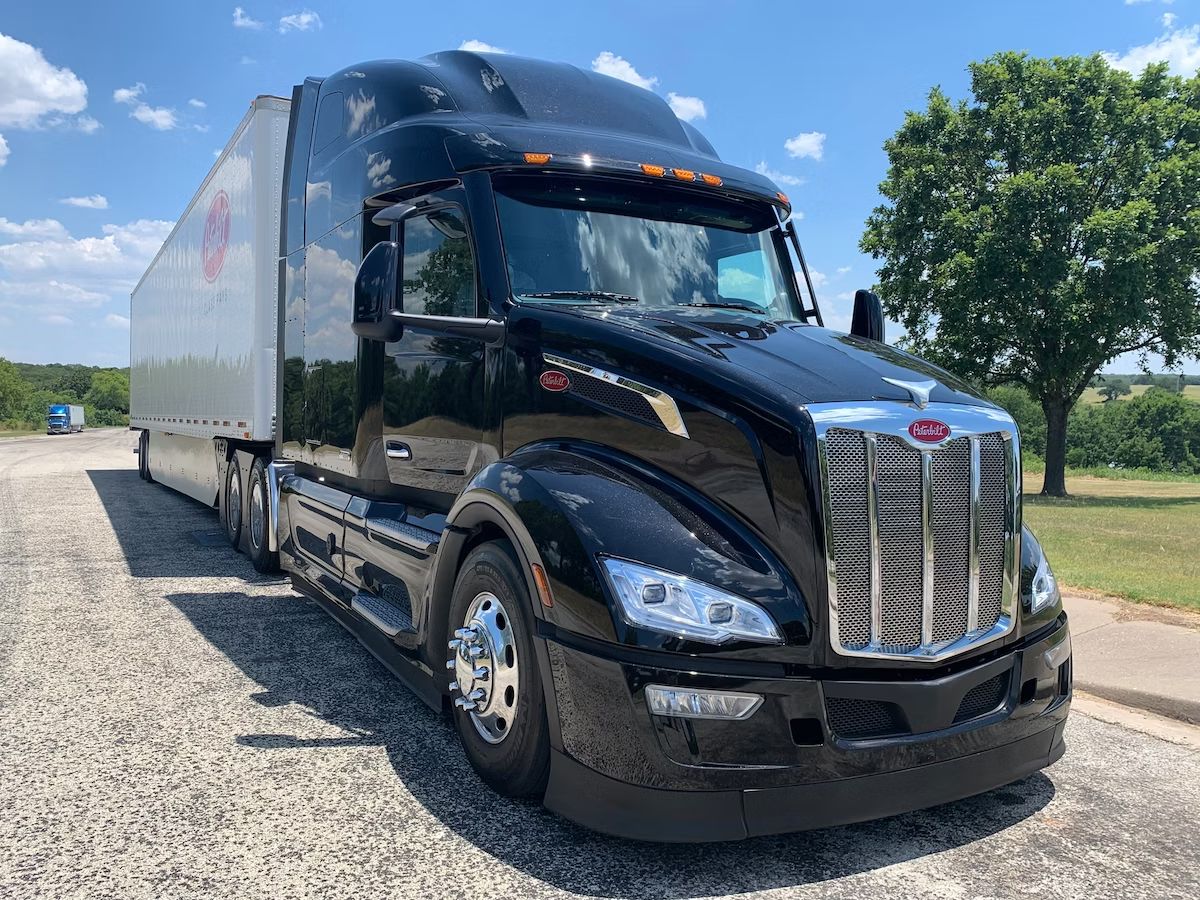
1. Exterior design comparisons
Peterbilt 579
This model is a culmination of Peterbilt’s legacy and a peek into modern truck design. Its aerodynamic contours are not just for show; they are pivotal in fuel efficiency.
The 579 features a sleek hood, a distinctive grille, and streamlined side panels, giving it a more contemporary stance. Large windows ensure maximum visibility, merging safety with aesthetics.
Peterbilt 589
A more recent evolution in Peterbilt’s lineup, the 589 builds on the foundation set by its predecessors, bringing in more aggressive design elements. Its grille is bold, with chrome accents making a pronounced statement.
The cab’s design emphasizes both form and function, with subtle tweaks that aid in aerodynamics and provide it with a more dominant road presence.
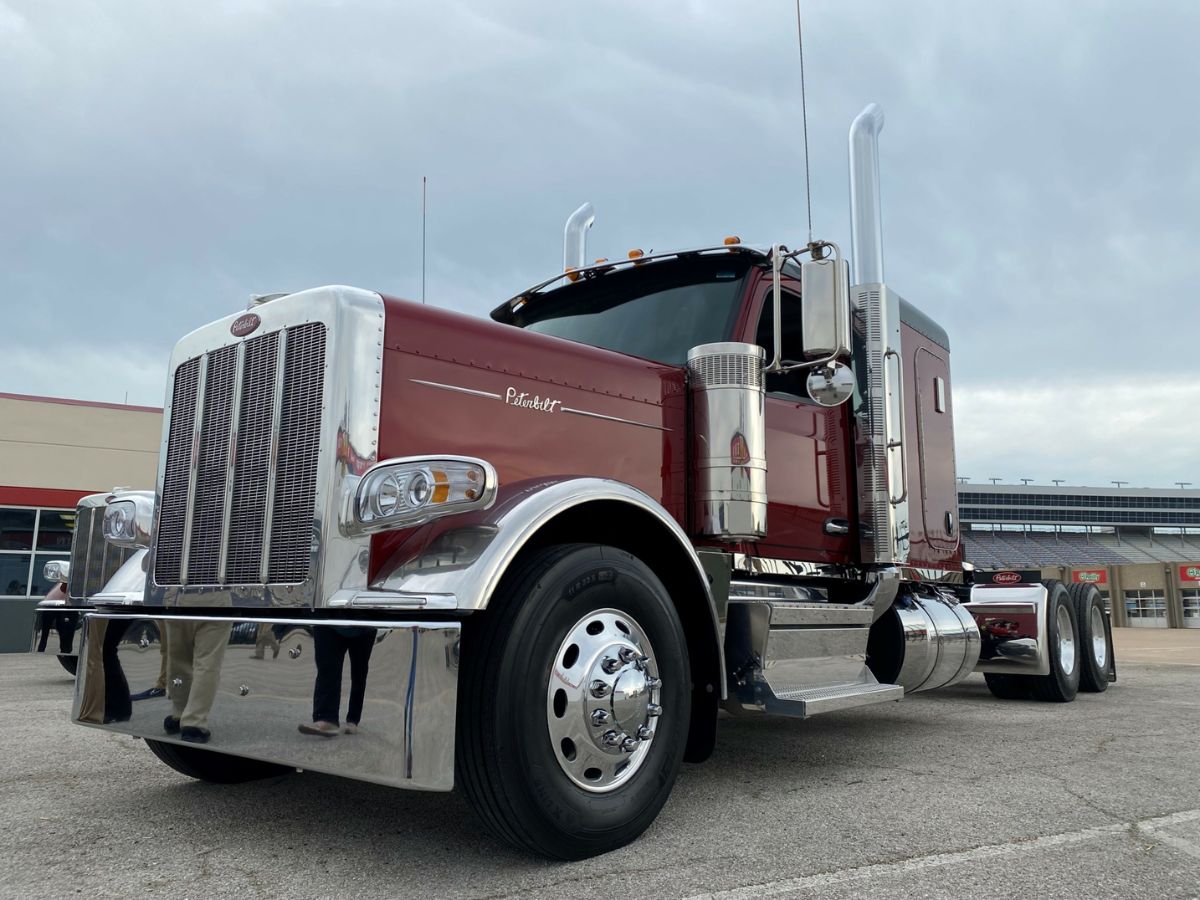
2. Interior enhancements and comforts
Peterbilt 579
Step inside, and you’re greeted by a driver-centric environment. The spacious cab is designed with long-haul comfort in mind. Ergonomic controls, premium materials, and intuitive tech integrations make it a home away from home for many truckers. The driver’s dashboard is functional and aesthetically pleasing, ensuring every control is within arm’s reach.
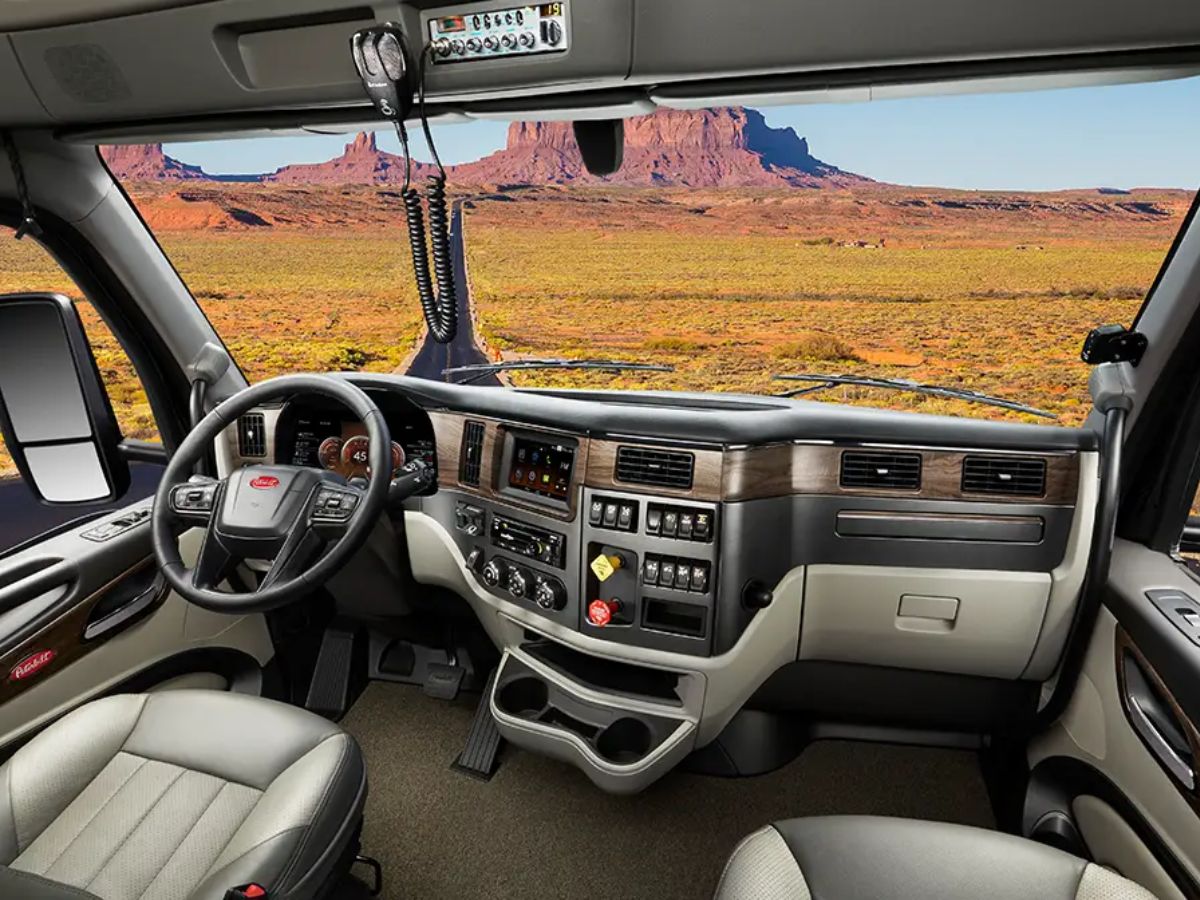
Peterbilt 589
The 589 takes the interior game up a notch. Incorporating feedback from countless drivers, this model boasts an even more refined space. Advanced noise reduction ensures a quieter ride, while improved seating offers enhanced lumbar and lateral support. The tech-infused dashboard is more interactive, offering drivers a blend of traditional gauges with modern digital displays.
In essence 🤝
While the Peterbilt 579 showcases a harmonious blend of tradition and modernity, the 589 pushes the envelope, signaling the future of truck design. Both models, in their own right, are masterclasses in aesthetics, ensuring that drivers perform their best and ride in style.
Performance and Specifications
In the world of trucking, aesthetics might catch the eye, but it’s performance that truly captures the heart. After all, these machines are built to haul, traverse challenging terrains, and endure long hours on the highway. Let’s delve into the mechanical muscle behind the Peterbilt 579 and 589.
1. Engine options and performance
Peterbilt 579
The 579 offers a range of engine options to suit varied needs, with PACCAR’s proprietary engines being a popular choice. The PACCAR MX-13, for instance, delivers between 405 to 565 horsepower and a torque range of 1,450 to 1,850 lb-ft, ensuring power isn’t compromised.
Fuel efficiency is a hallmark, with its engines designed for optimal performance while keeping emissions low.
Peterbilt 589
The newer 589 model sees enhanced performance metrics. While also offering PACCAR engines, the specs see a slight boost. The flagship MX-13, for instance, can push upwards of 575 horsepower, catering to those heavy-duty assignments with ease.
Advances in engine technology also translate to improved fuel consumption rates, ensuring that the truck runs longer distances on less fuel.
2. Drivability and handling
Peterbilt 579
Known for its smooth ride, the 579 features a responsive steering system and a suspension tailored for comfort. Whether navigating city streets or cruising on highways, drivers often commend its ease of handling and stability, even when fully loaded.
Peterbilt 589
Building on the 579’s foundation, the 589 introduces advanced steering systems and a more adaptive suspension. The result is an even smoother driving experience, reduced driver fatigue, and heightened maneuverability, especially in tight spots.
3. Transmission and drivetrain
Peterbilt 579
Options abound with the 579. Whether one opts for the manual for that traditional trucking feel or the automated transmission for ease, there’s something for every driver. The drivetrain is robust, ensuring power is effectively translated to the wheels.
Peterbilt 589
The 589 leans more towards modern transmission systems, with a focus on automated solutions that optimize gear shifts for fuel efficiency and power. The drivetrain sees improvements too, with reinforced components ensuring longevity and reduced maintenance intervals.
To sum it up 📝
While the Peterbilt 579 offers a balanced performance profile suitable for a wide range of tasks, the 589 pushes the boundaries, offering enhanced specs for those seeking a bit more oomph from their rig. Both models are a testament to Peterbilt’s dedication to delivering power, efficiency, and a superior driving experience.
Safety Features and Updates
In an industry where cargo, distance, and deadlines loom large, safety remains paramount. Peterbilt, with its enduring commitment to driver well-being and road safety, consistently integrates cutting-edge safety technology into its models.
Let’s juxtapose the safety attributes of the Peterbilt 579 and 589.
1. Core Safety Features
Peterbilt 579
- Stability Control: This system helps prevent rollovers and loss of control, especially vital given the size and weight of the rig.
- Collision Mitigation: Advanced technology anticipates potential collisions, providing drivers with alerts and, if necessary, autonomously applying brakes to prevent or reduce the severity of a crash.
- Lane Departure Warning: Ensuring the truck remains within its lane, this feature alerts drivers if they inadvertently drift without signaling.
- Air Disc Brakes: Offering better stopping power, especially under heavy loads, these brakes enhance the overall safety quotient.
Peterbilt 589
- Enhanced Collision Mitigation: Building on the 579’s foundation, the 589’s system is even more responsive, leveraging advanced sensors and algorithms.
- Adaptive Cruise Control: It maintains a safe following distance, adjusting the truck’s speed based on traffic conditions.
- Side Object Detection: This added feature scans for vehicles or obstacles on the side, particularly useful during lane changes or merges.
- 360° Camera System: Offering drivers a bird’s eye view, this system aids in parking, navigating tight spaces, and ensuring no blind spots.
2. Cabin Safety and Ergonomics
Peterbilt 579
The cabin is designed with the driver’s physical well-being in mind. An intuitive dashboard layout ensures all controls are within reach, reducing distractions. Seats are ergonomically designed to offer optimal lumbar support, essential for long drives. Moreover, ample cabin insulation reduces noise, ensuring drivers remain focused.
Peterbilt 589
cs to the next level, the 589’s cabin features more adjustable seats with heating and ventilation options. An even more streamlined dashboard with touch controls reduces cognitive load, and improved insulation further diminishes fatigue by ensuring a quieter ride.
In essence ✅
While the Peterbilt 579 stands as a beacon of safety in the trucking world, the 589 elevates these standards, incorporating the latest in safety technology and cabin design. Both models underscore Peterbilt’s unwavering commitment to ensuring that drivers, cargo, and fellow road users remain protected at all times.
Cost of Ownership
The initial price tag on a truck is just the tip of the financial iceberg. True cost encompasses a broader spectrum, from maintenance and repairs to fuel efficiency and resale value.
In the realm of trucking, understanding this total cost of ownership (TCO) is essential. Let’s dive into the financial landscape surrounding the Peterbilt 579 and 589.
1. Initial Investment
Peterbilt 579
As a model that’s been around and has seen various iterations, the 579 often comes with a competitive initial price point. Depending on configurations and customizations, prospective buyers can expect a range, but it’s designed to cater to both budget-conscious fleet managers and individual owners.
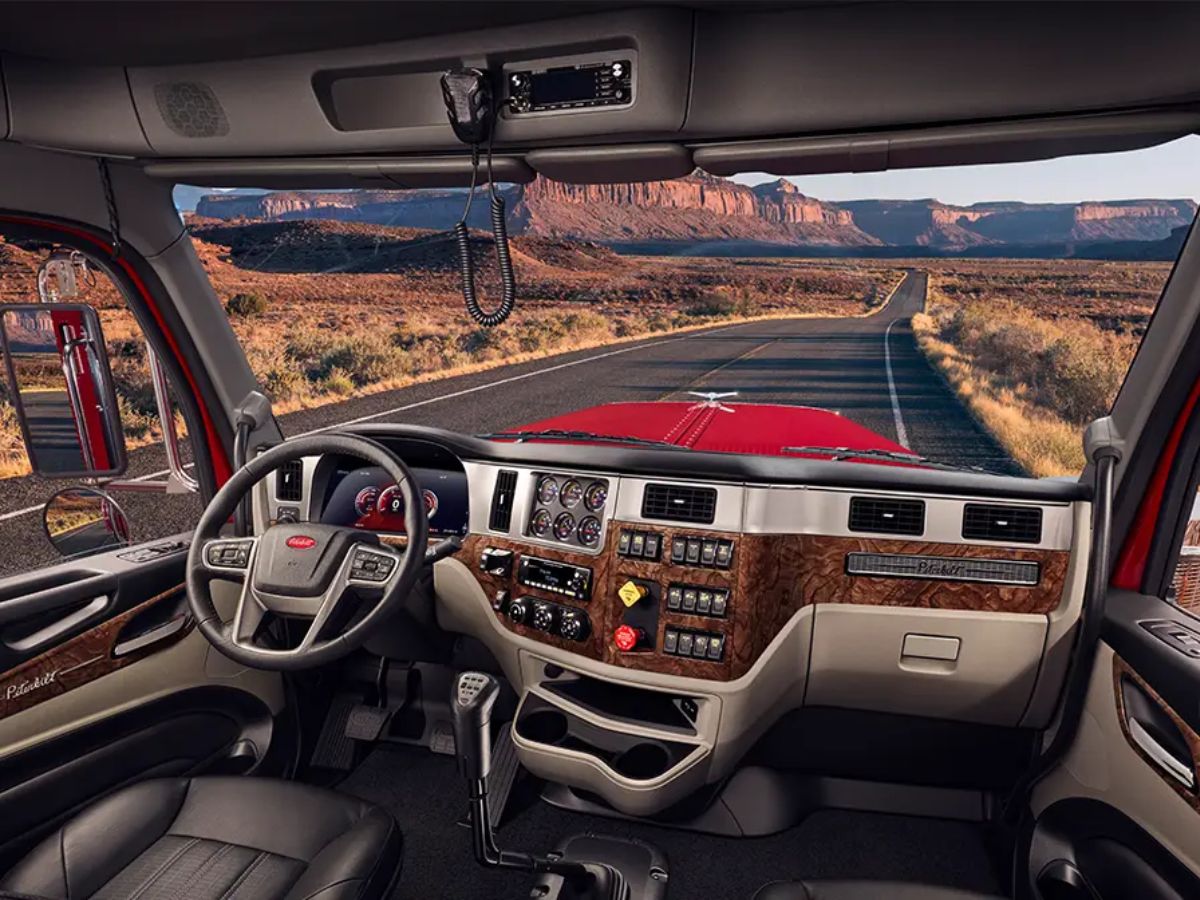
Peterbilt 589
Being a newer model with enhanced features, the 589 naturally commands a higher initial investment. The advanced technology, improved design, and other innovations reflect in its price, making it a premium choice.
2. Maintenance and Repairs
Peterbilt 579
With a robust build and tried-and-true components, the 579 boasts reliable performance. Its widespread use means parts are readily available, often at reasonable prices. Regular maintenance costs are generally on par with industry standards.
Peterbilt 589
While the 589 integrates newer technology and components, Peterbilt ensures that it remains durable. The emphasis on quality means fewer breakdowns, but when they do occur, specialized parts or expertise might slightly elevate repair costs.
3. Fuel Efficiency
Peterbilt 579
The aerodynamic design, coupled with efficient engine options, ensures that the 579 delivers commendable miles per gallon (MPG), thus helping owners save on fuel costs over the truck’s lifespan.
Peterbilt 589
Building on the 579’s foundation, the 589 pushes fuel efficiency even further. Innovations in engine technology and aerodynamics translate to fewer stops at the gas station, significantly impacting long-term operational costs.
4. Resale Value
Peterbilt 579
Peterbilts in general, hold their value well, and the 579 is no exception. Its reputation, widespread use, and reliability ensure that owners can expect a reasonable resale price when it’s time to upgrade or sell.
Peterbilt 579
As a newer model with cutting-edge features, the 589’s depreciation curve might be gentler. It’s anticipated that, given its advanced features and enhanced performance, it would command a premium in the resale market.
In conclusion
While the Peterbilt 579 offers a more accessible entry point with solid value retention, the 589, though a premium investment, promises potential savings in the long run, especially when considering fuel efficiency and anticipated resale value.
Both trucks embody the essence of Peterbilt’s commitment to quality, ensuring that owners receive value at every turn.






